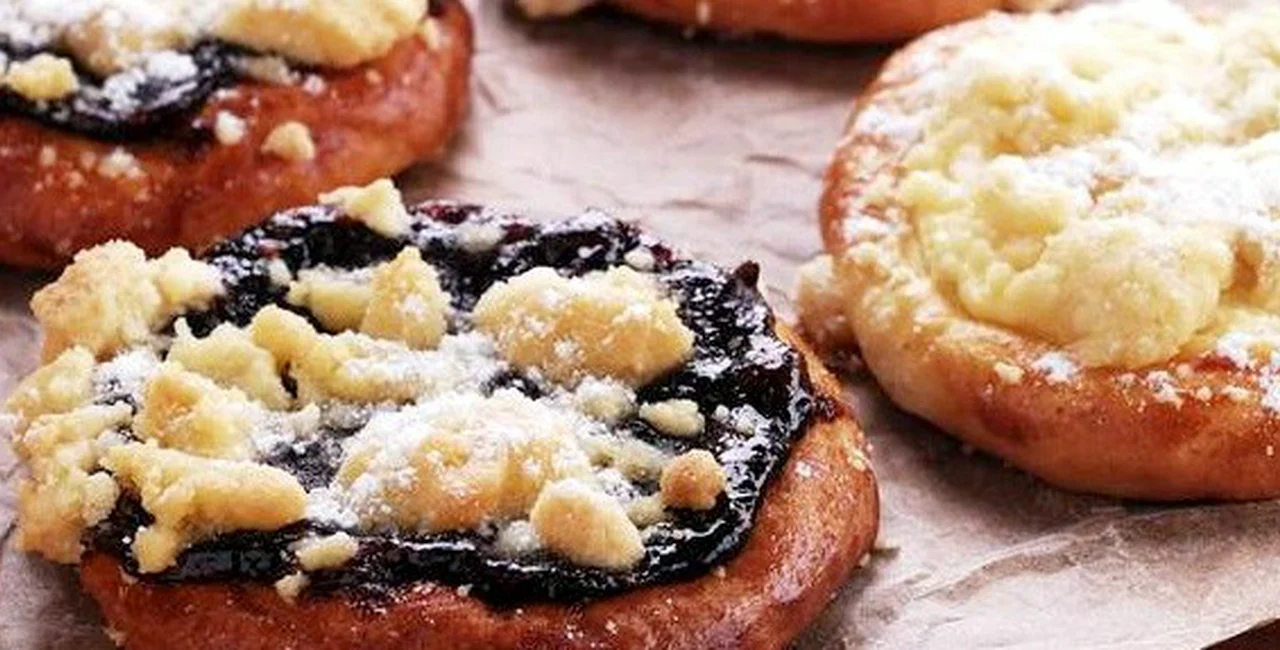I’m really not into all those ‘Top XX whatever to see before you die’ articles, but I read this one on prior-to-demise bakeries when it was emailed to me by someone wanting to know if I’d been to Number 22 (Prague’s Café Savoy).
I was more intrigued though with Number 7, a place called Czech Stop in West, Texas. Apparently they have the best koláče around. Then there was this report from Bon Appetit Magazine naming 2015 the year of the koláče…in the U.S.
How odd, I thought. Apparently, if I want a pre-death Czech traditional pastry, I’d have to leave the Czech Republic. Shouldn’t I be able to get a pretty darn good one in the country? I decided to ask around.
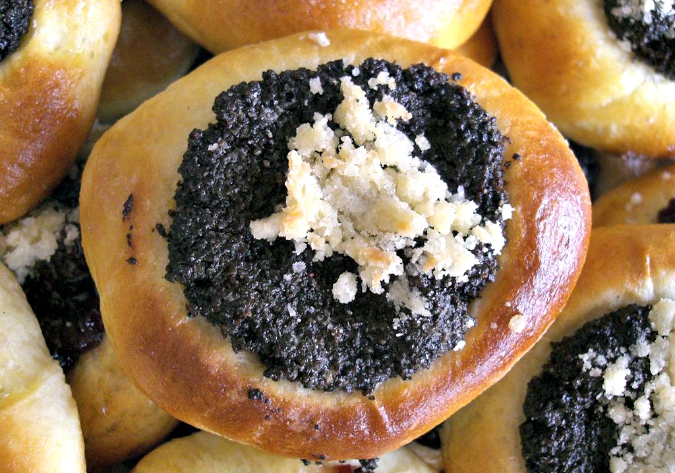
Poppy koláček/Image: Wiki Comons – Chmee2
I do admit to not actually being a fan of koláče. I tried a few when I first came to Prague and found them to have a cardboard-like crust and tasteless fillings. Querying ‘Do you know any place that sells good koláče’ to both Czechs and foreigners alike was usually met with semi-blank looks and ‘uhhhs.’ I got recommendations for good bakeries and sweet shops but only a few actually said THIS place has good koláče. I ended up with the impression that no one is eating these cakes.
Not so, according to Hana Šemíková, owner of Simply Good a bakery in Karlín, who makes koláče along with other delightful cakes.
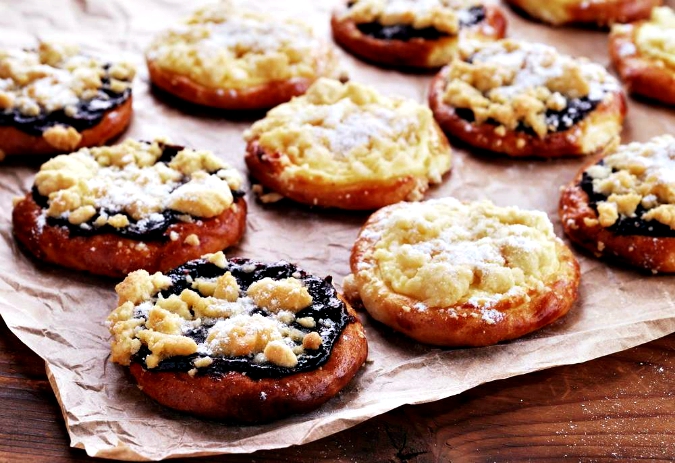
Simply Good, undisputed queens of the koláček/Image: Facebook
“The problem is quality,” she said. “And that’s not just for koláče but the baking industry in general. These little cakes are our tradition and I think Czechs love them. They are very popular with our company clients for breakfast and they are usually the first thing we sell out of every day.”
Šemíková believes the communist period interpreted the tradition and after the revolution people wanted good bakeries again.
“These bakeries did well but eventually the prices increased for bakers, there wasn’t as much profit and the quality began to suffer,” she said. “From about 1995-2010 was a period of bad quality baked goods, the only motivation was price – and it was on both sides. People wanted to spend less and bakeries wanted to make more.”
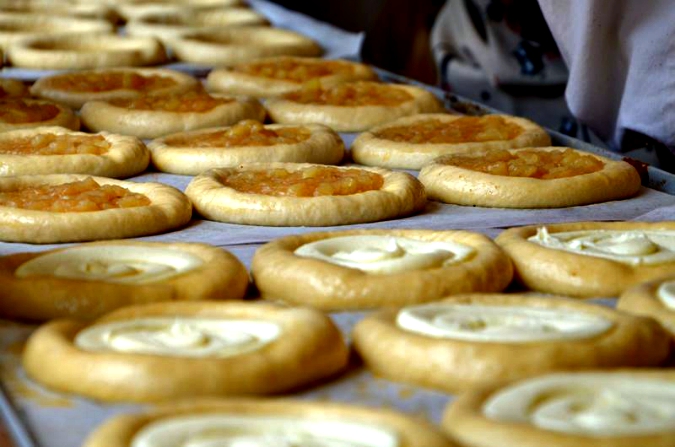
At Jiřího z Poděbrad farmer’s market/Image: Pekárna Kabát Facebook
“If you go out of Prague, it’s not that way,” she added. “Small bakeries do it the old, proper way, but in Prague you don’t feel the tradition.” She says they are time consuming to bake at home and many people think it’s too much work.
Simply Good’s koláče are pretty wonderful. Soft crust, tasty fillings, lots of yummy crumble on top. In a blind taste test, I would probably not have guessed this was a koláč, based on my previous tastings.
Armed with the new koláče knowledge given to me by Šemíková, I hit the town. I looked for koláče with a ‘shiny’ crust, meaning it had been basted before being baked. I looked for ones with plentiful fillings and a decent amount of crumble on top. I avoided chains, choosing neighborhood bakeries that might follow baking traditions similar to bakeries in smaller towns. About 90% of the time, I left without buying one. They just looked too awful. I also had a difficult time tracking them down. Many of the ‘good’ sweet shops don’t make them, you really need a bakery. And surprisingly one of the best I came across was from a chain, Pekárna Kabát.
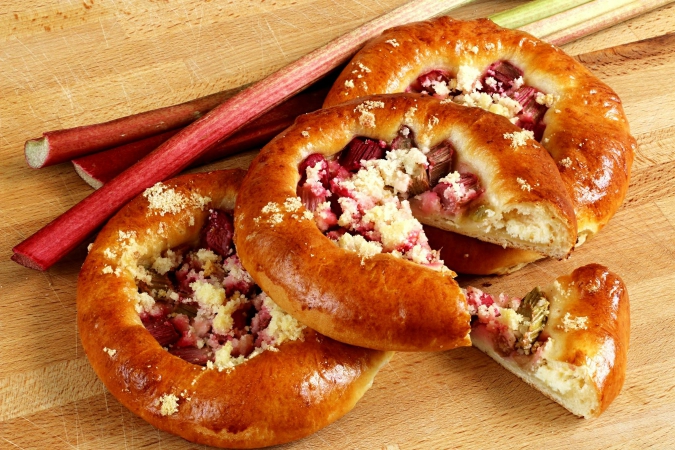
Pekárna Kabát’s strawberry/rhubarb/Image: Facebook
This bakery, which you can find in some metro stations, in carts, as well as individual shops, was recommended to me more times than any other one. And the strawberry koláč (22 CZK) I had was pretty good. It was big enough to share, the filling had pieces of strawberry in it, and the crust wasn’t dry or chewy. Choosing smaller bakeries sometimes paid off; Holešovické pekařství (Komunardů 12) had a quite pleasing blueberry koláč (15 CZK). The crust was a bit chewy, but still acceptable and the blueberry filling was very good.
Thinking those Czech specialty food shops popping up everywhere might show me some koláče love, I went to Gruntand Sklizeno neither of which had them at the locations I visited. I ‘lucked’ out at Česká stodola where they had a handful of poppy seed cakes and one plum one. I had been placing a lot of emphasis on how the koláč looked and thought maybe I shouldn’t be so superficial. These didn’t look great, but I asked for the plum one anyway. I was a bit taken aback by the 22 CZK price; the pastry was quite small. But, I thought, I’m sure it will be fresh and tasty. Nope. Into the garbage. Guess the appearance factor should be continue to be a consideration.
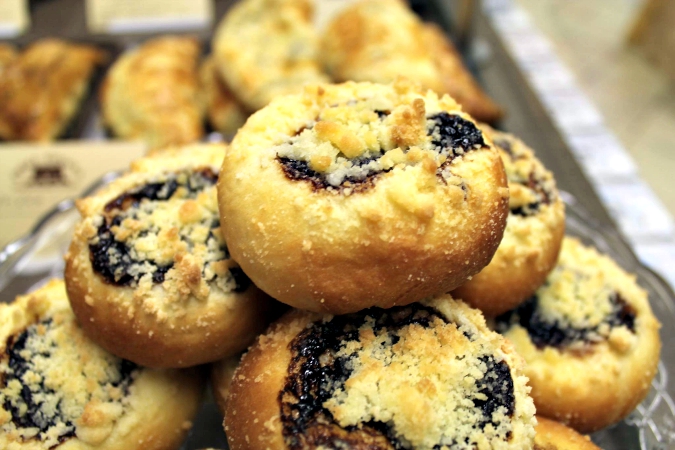
Česká stodola’s version/Image: Facebook
And I got back up on this fact from cookbook author Dr. Peter Trnka whose book, The Best of Czech Cooking offers koláč recipes. He offered this sage advice.
“If you are buying cakes in a sweetshop make sure they are freshly baked,” he said. “If the cheese in the cheesecake is beginning to peel away from the sides of the cake or pastry then you know the sweets have been sitting around for too long.”
Maybe that sitting around factor combined with the open air affected the few I dared try at both the IP Pavlova and Jiřího z Poděbrad farmers markets. If you’ve got a koláč hankering, it does seem best to just make them yourself. Or go to Texas.
Czech Cheese Cake (Linecký tvarohový koláč)
Courtesy of The Best of Czech Cooking
1 ½ cups sugar
1 cup butter
4 egg yolks
2 cups flour
¼ cup milk
1 pound farmer’s cheese or ricotta
½ cup raisins
Whisk or blend together 1 cup of the sugar and the butter very well, until you have a light and creamy mixture. Add two egg yolks and mix together well. Fold in the flour and a little milk if necessary to make a dough.
Butter a medium-sized 9-inch round cake pan. Spread the dough on the cake pan. Preheat the oven to 375 degrees Fahrenheit.
Press the farmer cheese through a sieve. Mix in the raisins, the remaining ½ cup sugar and two egg yolks. Spread the cheese mixture over the dough. Put the cake in the oven and bake for 30 minutes or until lightly golden on top.
Related articles
- 20 Photos that Prove Czech Forests Are Paradise for Mushroom Hunters
- Discovering Prague’s Most Deliciously Diverse Sandwich
- Letná Harvest Festival to Include Prague’s Largest Farmers Market Yet
- American Professional Eater Wins Czech Plum-Dumpling Contest
- Czech Farmer Invents Summer’s Trendiest Ice Cream Craze












 Reading time: 5 minutes
Reading time: 5 minutes 